At the company’s Synology 2020 conference (set in September 2019), a few key areas of expansion were outlined by the various speakers. I wanted to cover a few of the topics and the direction that the company outlined. For those wondering, that enormous Synology NAS I am posing with is not functional. I wish Synology would have stuck small 2-bay NAS hardware in the back and pulled a stunt like calling it the “largest desktop NAS” or something of that sort. Perhaps next year.
Backup Everywhere
Synology has the basic file storage part of providing NAS appliances fairly well figured out at this point. It is now taking aim at Veeam and other backup software solutions. Making backups is a leading practice that we encourage all of our users to adopt. Synology is aggressively targeting the backup market.
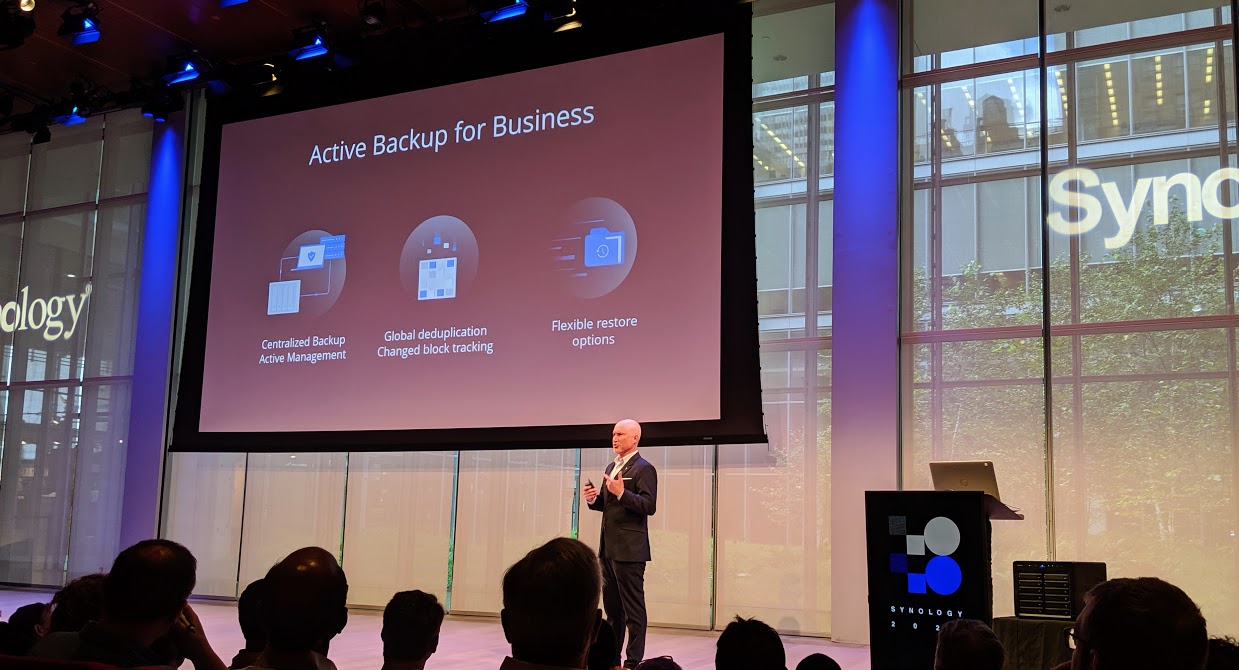
There are a ton of restore options from PCs to servers to virtual machines. Synology is building out the infrastructure to help SMB IT create and manage a successful backup solution using its software. Perhaps most importantly, Synology is promoting a solution where the license is included in the NAS. That makes the solution much less costly than some of its competitors that only provide backup software.
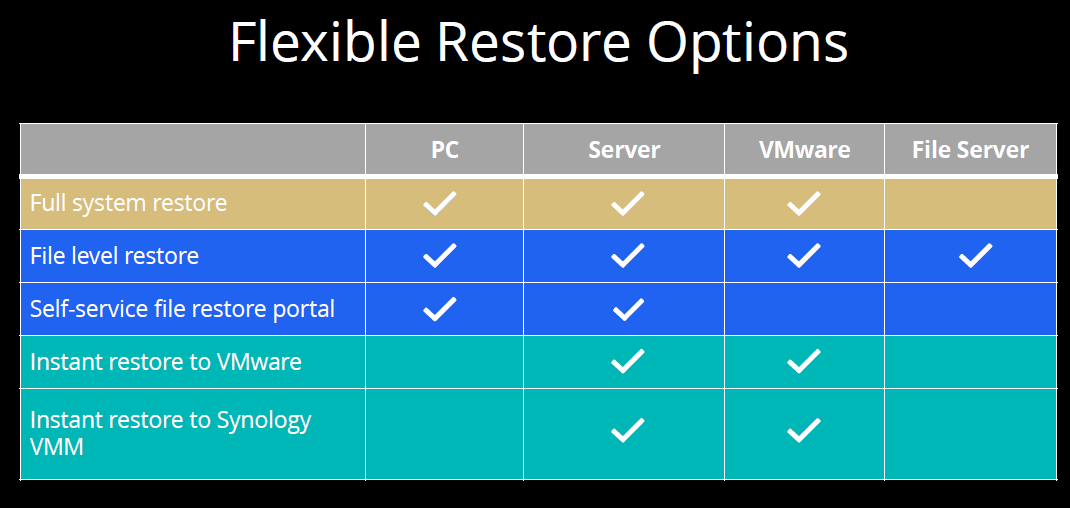
The Synology Active Backup suite goes beyond just data in VMware or Windows environments. One can even backup data stored in Microsoft Office 365 or Google G Suite. This is a big deal for anyone who is cautious about storing important business data in the cloud.
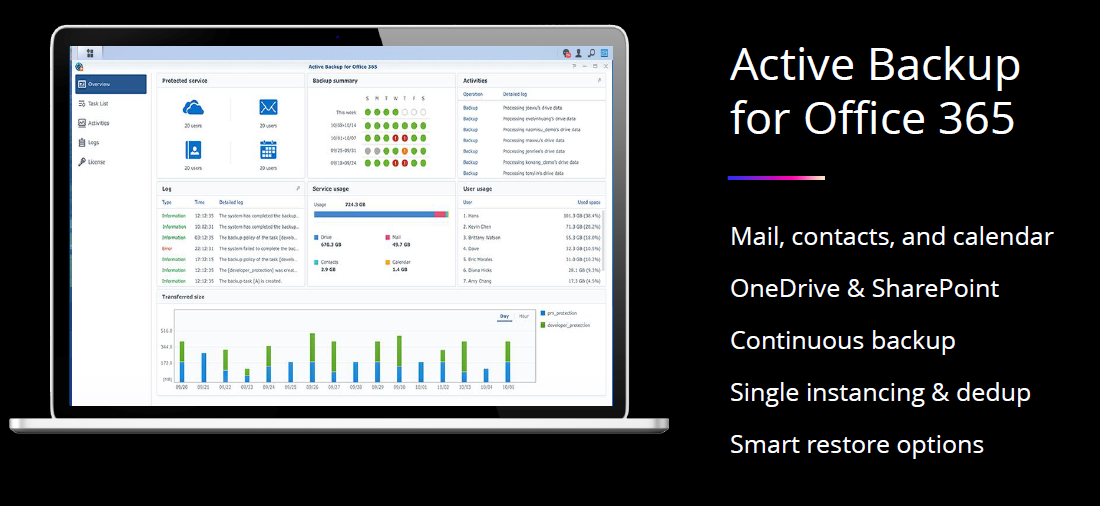
Beyond Active Backup, the company also discussed its Hyper Backup application. Hyper Backup is a tool to help if disaster strikes your local NAS.

One of the major integrations was with Synology C2. Synology opened its first data center in Germany so it could offer its own cloud services in the country. As part of Synology 2020, the company said it would soon open a US location.
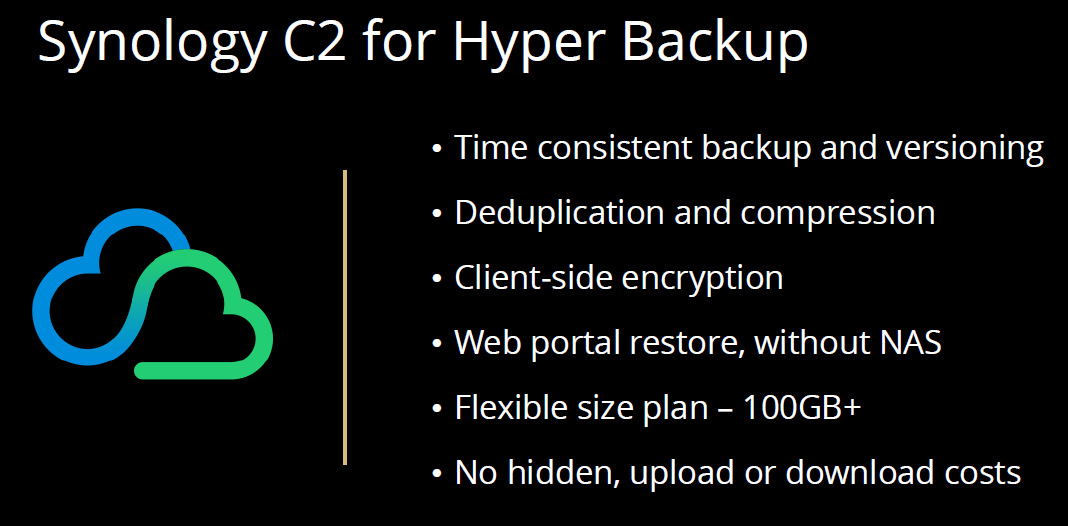
We see Synology C2 as a major integration point for the company. One application we can certainly see being served out of the C2 data center is Synology’s Centralized Management System. With Synology CMS, one can manage multiple servers through a single host. This is similar to what iXsystems TrueCommand in what the company is trying to do.
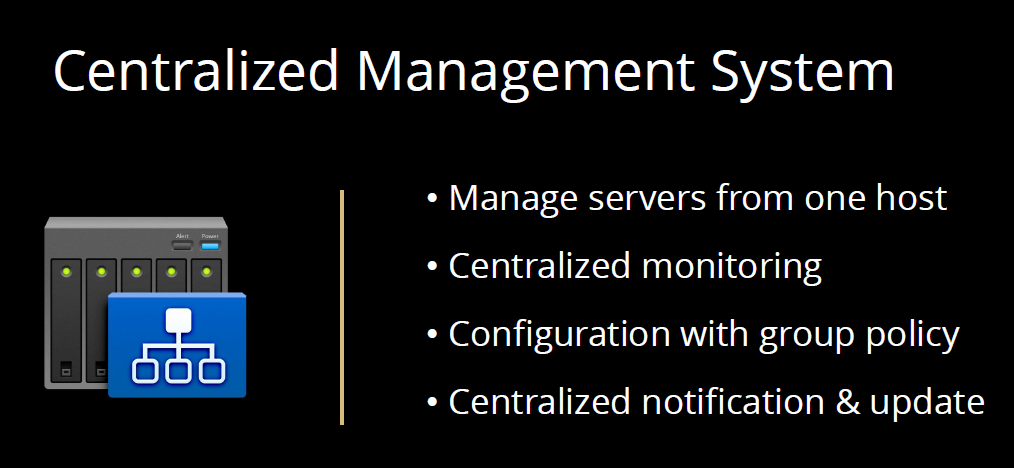
Overall, these backup features are designed to ensure a business has a disaster recovery plan and can keep its data safe and readily accessible.
Another key theme during the show was cloud integration and a hybrid cloud model. When looking at backups, we have already seen a number of hybrid cloud integration points, but there were more.
Cloud Integration
Synology Cloud Sync offers one or two-way sync to a number of clouds. It also allows for encrypted and compressed storage. Synology is not simply targeting a major player or two. Instead, it is offering sync to many large service providers.

One of the most innovative features is the Synology Hybrid Share local hot cache feature. One can, for example, put an entire data set in the Synology C2 cloud. Each branch office may only use a subset of that data. The Hybrid Share platform allows that subset of the data to be locally cached minimizing WAN traffic. This is a great feature.
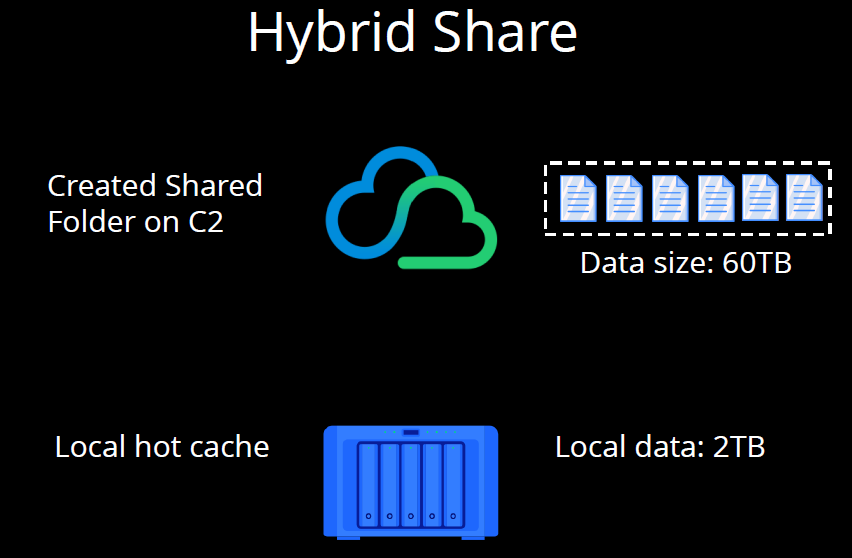
Synology syncs with many other clouds, but it believes that C2 is the best fit. It offers a handful of different plans for its cloud services. Note: prices are in Euros since it is being served out of Germany. We expect dollar-denominated pricing once the service opens in the US.
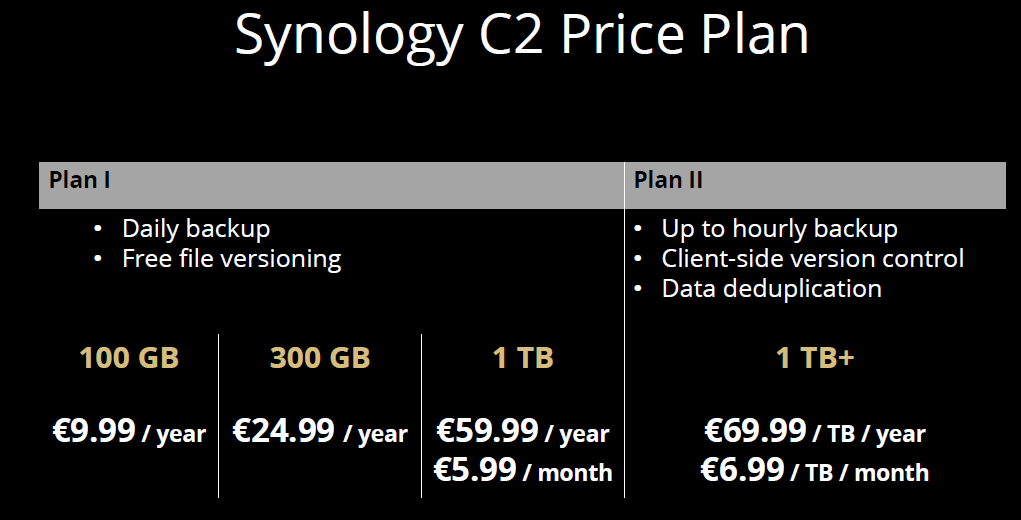
The company is not just selling C2 directly. There is now a Synology C2 Partner Portal that helps managed service providers utilize C2 and Synology NAS units for their customers.
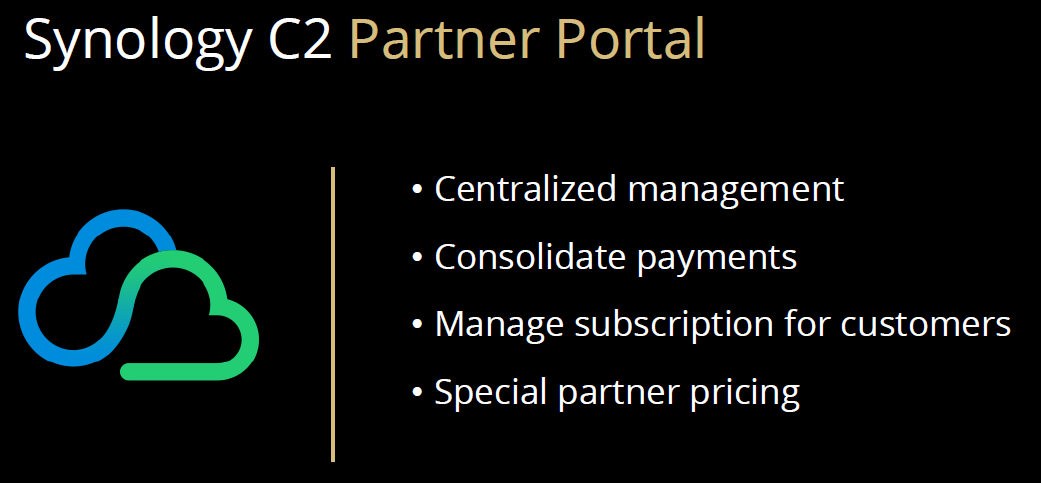
Synology clearly is putting a lot of effort into its cloud integration to allow for a true hybrid cloud experience. It is making a wise choice enabling its partner ecosystem to sell these solutions.
New Synology UC3200 Dual Controller iSCSI Solution
One of the prominently featured new products at the event was the Synology UC3200. The background here is that many organizations like Synology’s features and ease of use, but need high-availability. That is something a single NAS cannot provide. With the Synology UC3200, one gets active-active controllers, synced via a non-transparent bridge, for a SAS-based iSCSI infrastructure.
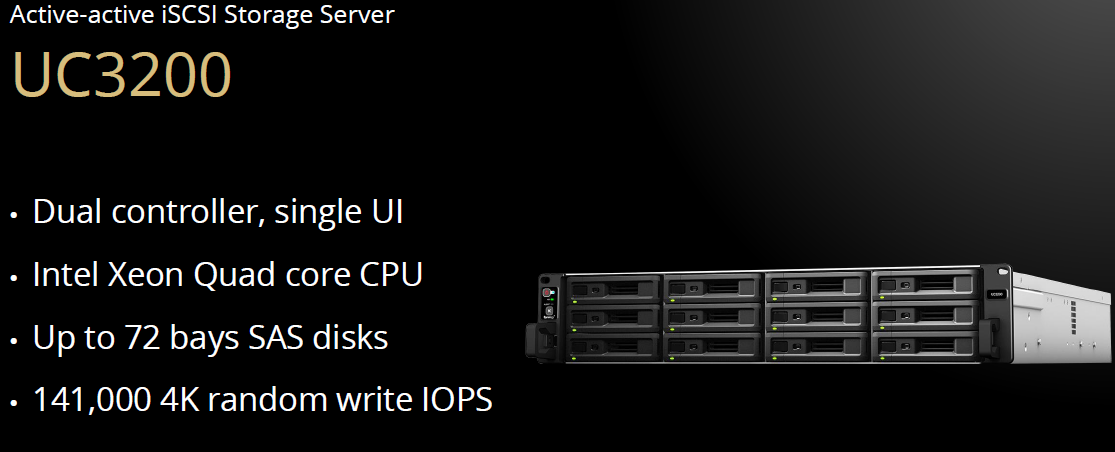
The two controller nodes can be upgraded via additional SAS disk shelves and dual-port SAS drives to handle up to 72 disks worth of storage. That means one can get up to 6x the 12 drive capacity of the base unit which is solid expansion for this class. Synology also says that you can manage the solution in a single UI so the company has done the integration to make this an easier to use the product.
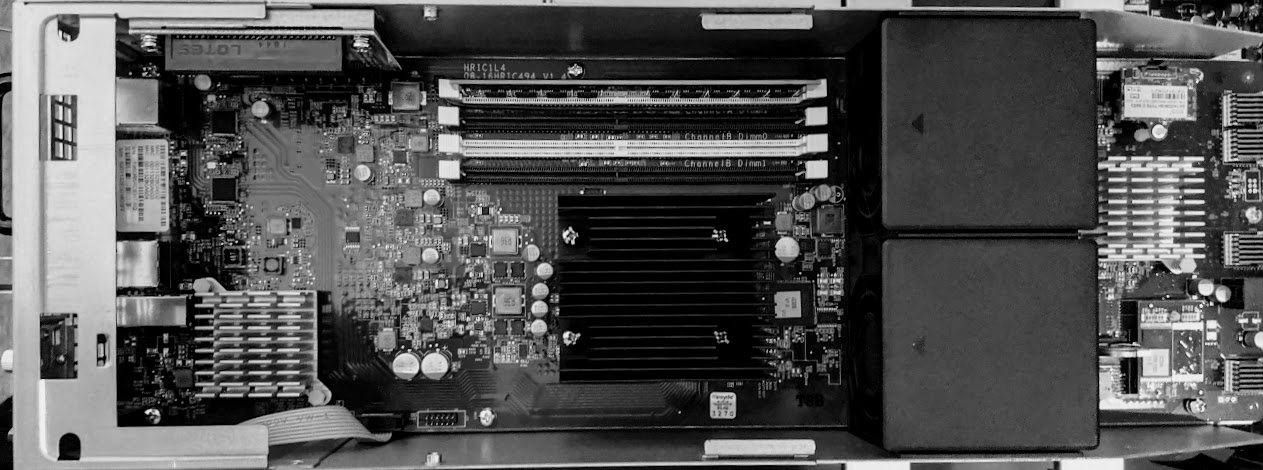
We saw a demo unit at the event under heavy blue light. Apologies for these photos. What one can see here is that Synology is using a Xeon D part and the company is claiming a quad-core. We asked and did not get a specific part, but it is likely something similar to an Intel Xeon D-1518 Benchmarks level of performance, likely with updated features. For a NAS, this keeps the power low but also does not provide a ton of compute performance.

We would have liked to see Synology use a more modern Xeon D-2100 series CPU and also utilize more 10GbE NICs. As it stands, each controller has a single 10Gbase-T NIC plus a 1GbE NIC. One can add an additional 10GbE NIC via an add-in card. Our readers generally prefer SFP+ networking for their rackmount gear given the higher-performing standard and relatively low cost and power consumption of SFP+ gear these days.
Final Words
Synology is so close to having a “killer app” experience in the SMB IT segment. If Synology focused on becoming the Nutanix of SMB, it would be a category killer. The company is so close to this, yet it seems not to be the key strategic focus.
An example is the company’s new high-availability array. HA storage is great, but it is typically deployed along with servers and virtualization solutions. Synology has a virtualization and container solution in DSM. Whereas Nutanix sought to combine top-shelf hardware for virtualization, Synology is not pushing the envelope in terms of hardware. There is an opportunity for Synology to provide a turnkey replacement in the SMB space to Windows Server and VMware, but the company’s hardware is far from leading-edge.
Overall, the company has great direction. It seems as though Synology is focusing more on channel partner sales. For our readers that work in SMB IT service organizations, this may be something to investigate.

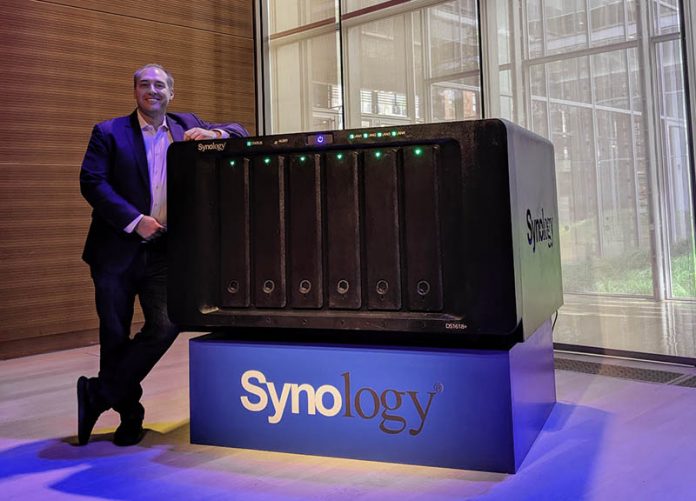


That’s you posing with an array of those new 35″ disks we’ve heard rumours of, right Patrick?
There’s a massive security issue with the current version of Active Backup for Business (ABB)
The backups sitting on the Synology NAS are NOT encrypted; and cannot be encrypted.
If you have physical access to the Synology, you have full and complete access to everything backed up to it via ABB.
Their OS, DSM has a major update to DSM7 coming next year; and no clue if this will fix the above massive security hole in ABB
re specs on UC3200
I simply do not understand Synology management
Create an interesting box such as this with active-active controllers; which will only be bought by Business, which uses SFP+.
Why not put in SFP+ rather than 10Base-T
Why such a lame CPU
Sadly, Synology tends to use weak hardware even in their business line
Imagine if @Patrick ran hardware for Synology. They’d go from worst to first overnight.